
-
Find the right food for your petTake this quiz to see which food may be the best for your furry friend.Find the right food for your petTake this quiz to see which food may be the best for your furry friend.Featured products
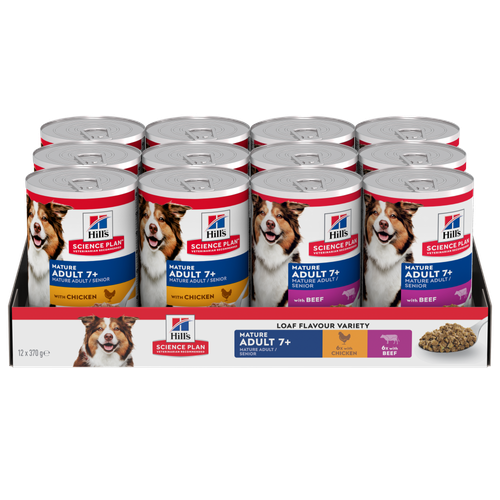 Mature Adult Dog Food
Mature Adult Dog FoodHill's Science Plan Mature Adult Multipack Wet Dog Food with Chicken & Beef are complete premium pet foods for mature adult dogs from 7 years. Your dog will love these deliciously smooth and savoury minced loaves, formulated to deliver the appropriate amount of energy to support the needs of adult dogs.
Shop Now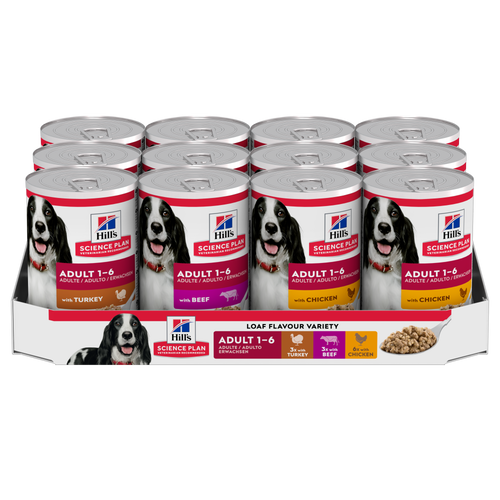 Adult Wet Dog Food with Beef
Adult Wet Dog Food with BeefHill's Science Plan Adult Multipack Wet Dog Food with Chicken, Beef & Turkey are complete premium pet foods for adult dogs from 1 year. Your dog will love these deliciously smooth and savoury minced loaves, formulated for balanced nutrition and overall health.
Shop Now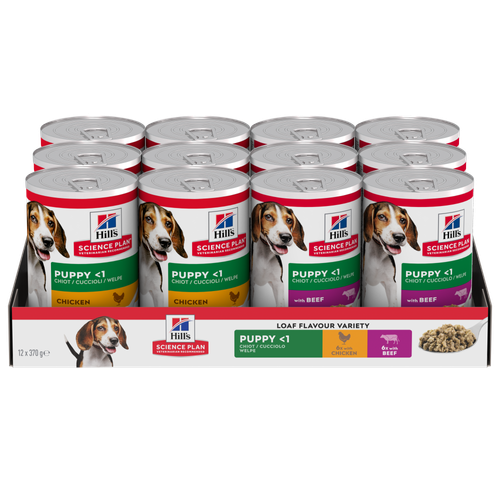 Puppy Food
Puppy FoodHill's Science Plan Puppy Multipack Wet Dog Food with Chicken & Beef are complete premium pet foods for growing puppies from weaning until 1 year old and for pregnant and nursing dogs. Your puppy will love these deliciously smooth and savoury minced loaves, formulated for balanced nutrition and overall health.
Shop NowFeatured products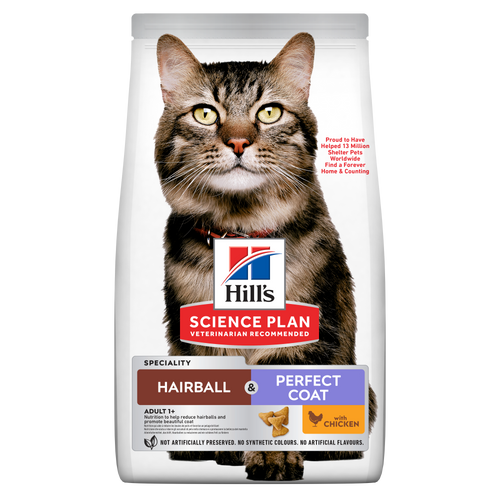 Hairball & Perfect Coat Adult Dry Cat Food with Chicken
Hairball & Perfect Coat Adult Dry Cat Food with ChickenHill's Science Plan Hairball & Perfect Coat Adult Cat Food with Chicken is formulated to effectively help avoid hairball formation in adult cats while promoting a beautiful coat. Thanks to its mix of essential omega-6 fatty acids, this food benefits the cat's skin and fur, keeping them healthy and shiny. Our Advanced Fibre Technology helps reduce hairballs by naturally promoting their passage through the gut. This food is formulated with high-quality protein for a perfectly balanced, great-tasting recipe.
Shop Now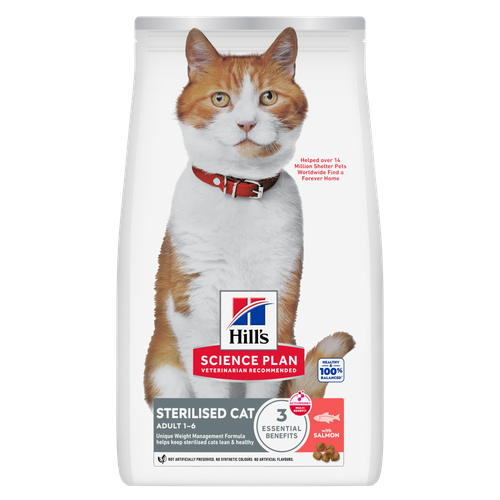 Sterilised Adult Cat Food
Sterilised Adult Cat FoodHill's Science Plan Adult Sterilised Cat Dry Food with Salmon is specially formulated with ActivBiome+ Multi-Benefit Technology. It is a precisely balanced nutrition, tailored to meet the needs of sterilised cats, to help keep them lean & healthy.
Shop Now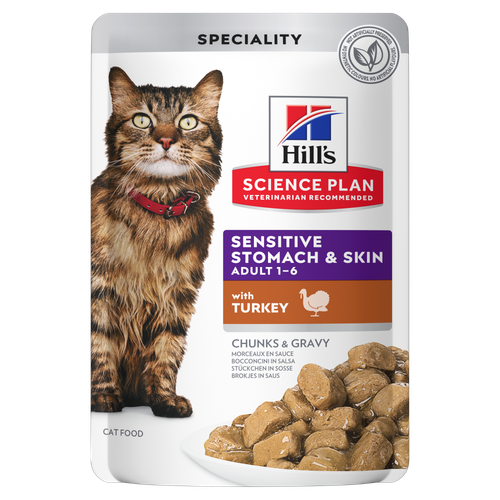 Sensitive Stomach & Skin Adult Cat Food
Sensitive Stomach & Skin Adult Cat FoodHill's Science Plan Sensitive Stomach & Skin Adult Wet Cat Food with Turkey is a complete pet food for adult cats, aged 1–6 years. This highly digestible wet food comes in a pouch and supports healthy digestion, as well as nourishes skin and promotes a thick and lustrous coat.
Shop Now -
Dog
- Dog Tips & Articles
-
Health Category
- Weight
- Food & Environmental Sensitivities
- Urinary
- Digestive
- Joint
- Kidney
-
Life Stage
- Puppy Nutrition
- Adult Nutrition
- Senior Nutrition
Cat- Cat Tips & Articles
-
Health Category
- Weight
- Skin & Food Sensitivities
- Urinary
- Digestive
- Kidney
-
Life Stage
- Kitten Nutrition
- Adult Nutrition
Featured articles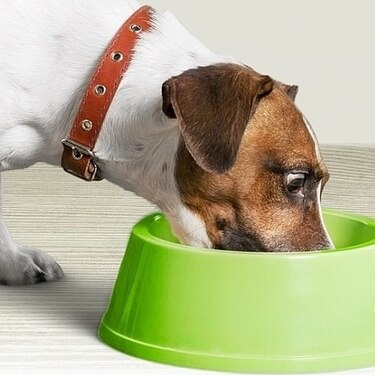 The Right Diet For Your Pet
The Right Diet For Your PetIn people, the right diet is very important. If you are eating the wrong way for your metabolism, activity level, age and lifestyle you could end up with health issues.
Read More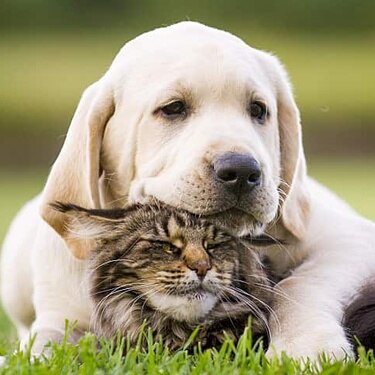 The Incredible Science Behind Your Pet's Microbiome
The Incredible Science Behind Your Pet's MicrobiomeLearn what your pet's microbiome is, how it contributes to your pet's gut and overall health, and why nutrition is important in maintaining healthy microbiomes.
Read More Show some love with wet foods: a great choice for pets with health issues
Show some love with wet foods: a great choice for pets with health issuesShow some love with wet foods: a great choice for pets with health issues.
Read More -


It’s often cats that have a reputation for being fussy eaters but dogs can be picky eaters too. It’s human nature to love feeding our pets and it’s a really important part of the human-animal bond. Watching your dog tuck into something delicious makes us feel happy and satisfied. If your dog just looks at what you’ve offered and walks away, it leaves both of you feeling a bit sad. In this article we’re going to look at why your dog might be a picky eater and what you can do to improve things for both of you. But first things first…
Is it really picky eating?
Dogs come in all shapes and sizes and temperaments these days. Some, like labradors, are famous for being extremely food-orientated while others are not actually that motivated by food and are more motivated by praise and attention from their owners. These dogs eat because they need to not because it’s the best part of their day. This is particularly true of dogs that have no competition. If you have a single dog and they are healthy, an ideal weight and their appetite hasn’t changed then it may just be that you have a dog that isn’t wild about food in general. Just give them plenty of love and fun and they will be happy. But what about the true fussy eaters?
Causes of fussy eating in dogs.
One of the major causes of fussy eating in dogs is us humans! Because of the way we are about feeding, and also because we love variety in our meals, we tend to get into bad habits early on. Dogs and cats don’t need lots of variety in their food and as long as they are given something tasty they will happily eat it long term. The problems usually start at a young age because pet parents may offer various different foods to try to find the one their puppy likes best. This can quickly let the dog know that if they hold out they will get given something different. Dogs aren’t silly and they can easily get us wrapped around their little paws!
Feeding dogs from the table is another major cause of fussy eating. It’s very important to have strict rules around scavenging and begging and the key is that this needs to be consistent. We all have that one relative that simply won’t follow the rules. If one person allows a dog to beg and the dog is rewarded with a sly piece of chicken under the table it can not only ruin your mealtimes because of the salivating presence on your lap but also create issues around food for your dog.
If you feel bad that your dog is hungry when you’re eating, simply feed them first or at the same time. Dogs can happily have three meals a day the same as us, as long as their ration is split across those meals and they are not being overfed.
Don’t overdo the treats. We all love to give the odd treat and they can work wonders for training but they should never be more than 10 percent of your dog’s daily ration. If they start to be picky because they’re waiting for treats then you need to cut back or use their normal dry food for treats.
What to do about a dog that is a picky eater.
If your dog really is a fussy eater there are a few things you can look at and change to try to help break those habits.
Make sure that you are happy with the brand and quality of the food you are feeding. It may be that your dog arrived with a food that you feel is cheap or inferior, so do a gradual transition to something in which you (or your vet if you’re unsure) have confidence. This will help your peace of mind even if your dog remains picky to start with.
Look at where they are being fed. We often feed dogs in places that are convenient to us, usually the kitchen. But bear in mind that the kitchen, especially around our mealtimes can be absolute bedlam. Clanging of pots and pans, people coming and going, children running around looking for snacks and so on. For many of the dogs this can be quite an overwhelming environment and could easily make them want to be elsewhere, even if they are really hungry. They may just quickly eat enough to take the edge off and then leave the rest. Feed your dog away from the chaos, somewhere calm and quiet. If they are a messy eater, just put a large placemat under their bowl if you’re worried about the carpet.


Tasty Tips
Try a different bowl. Some dogs don’t like to eat out of plastic or metal dishes. Try a ceramic one and see if it helps.
Don’t leave food down. Put their food down for around 30 minutes and then remove it. This is particularly important with tinned or wet food because it can spoil quickly. Taking food away lets your dog know that if they don’t eat it then and there, it disappears. That said, if your dog eats dry food only and is a grazer and an ideal weight you can just let them nibble when they want to.
When to consult your vet.
There are times that fussy or picky eating could be a sign of a medical or behavioural issue that needs addressing. Changes in appetite and thirst are often the very first signs of problems. As always, knowing what is normal for your individual dog is very important because the sooner you spot a change, the sooner you can seek help. Here are some things that should prompt you to seek help:
Is it a new thing? If your dog is normally a good eater and you haven’t changed their food, then picky eating should definitely prompt a vet check. It may be that they have mouth pain or are feeling sick due to an infection or a disease elsewhere in the body. You may notice your dog looks like they want to eat but then walks away.
Weight loss. Regular weight checks are important throughout life as weight loss and gain can both signal problems. If you think your dog is less fervent about food but you’re not sure, check their weight. If it’s gone down, see your vet.
Behaviour changes. Is your dog more agitated or sleeping more than usual? If the pickiness coincides with other odd behaviour, time for a checkup.
Other medical signs. Look for signs like changes in thirst, signs of abdominal discomfort like hunching, and vomiting or diarrhoea.
Prevention is better than cure.
Right from the word go, speak to your vet about what to feed. If you have a puppy they should be fed a complete and balanced puppy food suitable for their size. The breeder will hopefully give you some of their food to take home with you. If you’re planning on changing their food make sure you have enough of the original to do a slow transition to the new food. This helps acceptance but also helps avoid an upset stomach that can happen with a sudden change. Dogs that will be over 25 kg as an adult should be fed large breed puppy food. If you’ve adopted an adult dog, the same applies for adult food. Hopefully, having done a slow transition your dog will be happily munching away at what you’ve given.
In summary
Fussy eating isn’t necessarily something to be worried about. Your dog may just not be a foodie. Stay consistent with rules and don’t give in if they don’t eat. Just remove the food after 30 minutes and try again with fresh food later. Never feed your dog from the table or allow anyone else to! If you want to give treats, keep them to a minimum and avoid giving them around mealtimes. If you are ever worried, or you notice other signs, speak to your vet. We are always happy to hear from you and we would always rather you be safe than sorry.
Reviewed by Dr Hein Meyer, DVM, PhD, Dipl-ECVIM-CA and Dr Emma Milne BVSc FRCVS.


One of our staff authors prepared this article for you
Related products

Hill's Science Plan Mature Adult Multipack Wet Dog Food with Chicken & Beef are complete premium pet foods for mature adult dogs from 7 years. Your dog will love these deliciously smooth and savoury minced loaves, formulated to deliver the appropriate amount of energy to support the needs of adult dogs.
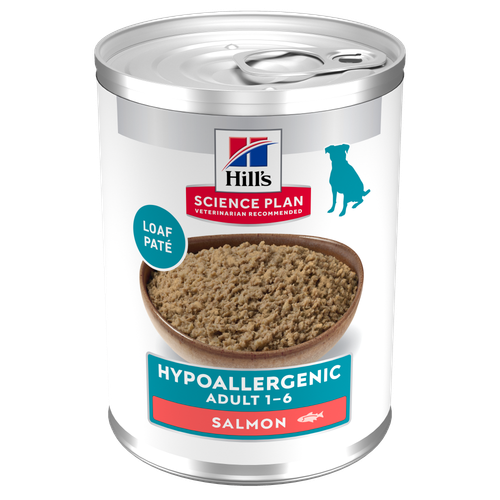
Hill's Science Plan Hypoallergenic Adult Wet Dog Food with Salmon is a complete premium pet food for all adult dogs from 1 year. This savoury tinned loaf is specially formulated for dogs with delicate skin and stomachs. It features a single novel animal protein source and is grain-free.

Hill's Science Plan Puppy Multipack Wet Dog Food with Chicken & Beef are complete premium pet foods for growing puppies from weaning until 1 year old and for pregnant and nursing dogs. Your puppy will love these deliciously smooth and savoury minced loaves, formulated for balanced nutrition and overall health.

Hill's Science Plan Adult Multipack Wet Dog Food with Chicken, Beef & Turkey are complete premium pet foods for adult dogs from 1 year. Your dog will love these deliciously smooth and savoury minced loaves, formulated for balanced nutrition and overall health.
Related articles
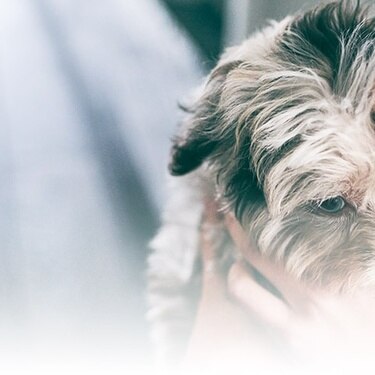
How, when and what to feed your new puppy is an important decision, learn more about the things to consider for feeding your puppy.

Watermelon is usually a healthy treat for dogs, but learn the tips about its safety, which parts are OK to feed your dog, and how much is a healthy amount.
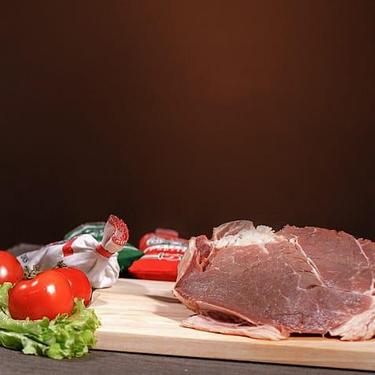
Learn about the potential health risks of a raw diet for dogs and why they aren't the best option for your pup or you.
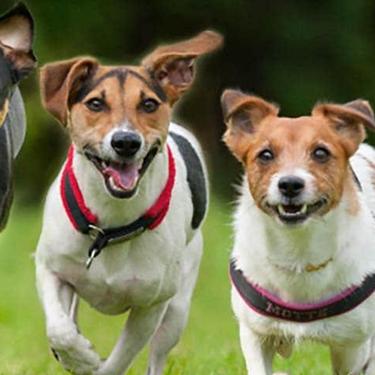
Many human foods are dangerous to dogs. Read about 5 of the worst toxic food offenders that can kill your dog - and how much it takes to hurt them.

Put your dog on a diet without them knowing
Our low calorie formula helps you control your dog's weight. It's packed with high-quality protein for building lean muscles, and made with purposeful ingredients for a flavourful, nutritious meal. Clinically proven antioxidants, Vitamin C+E, help promote a healthy immune system.
Put your dog on a diet without them knowing
Our low calorie formula helps you control your dog's weight. It's packed with high-quality protein for building lean muscles, and made with purposeful ingredients for a flavourful, nutritious meal. Clinically proven antioxidants, Vitamin C+E, help promote a healthy immune system.

